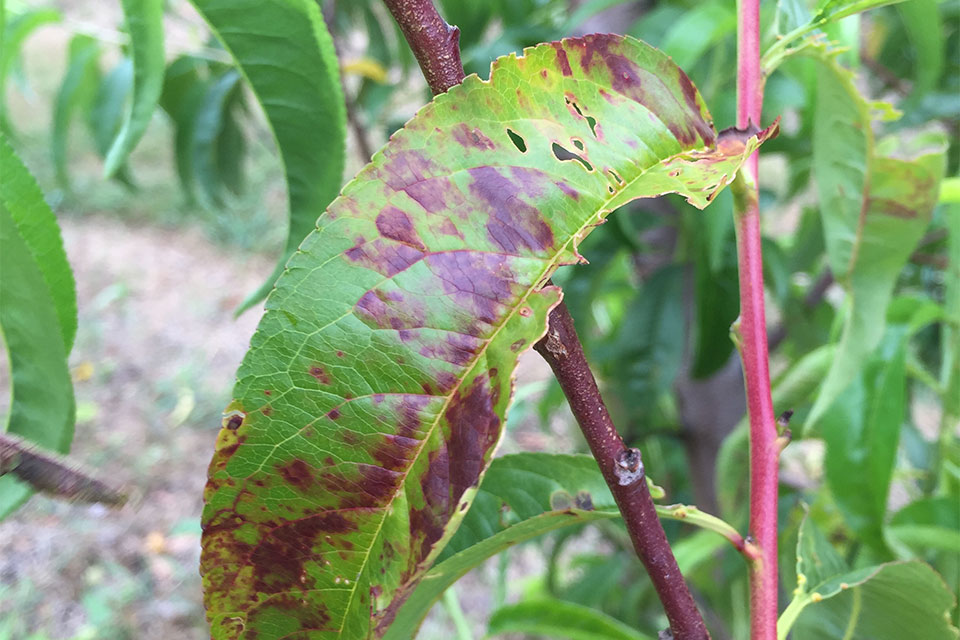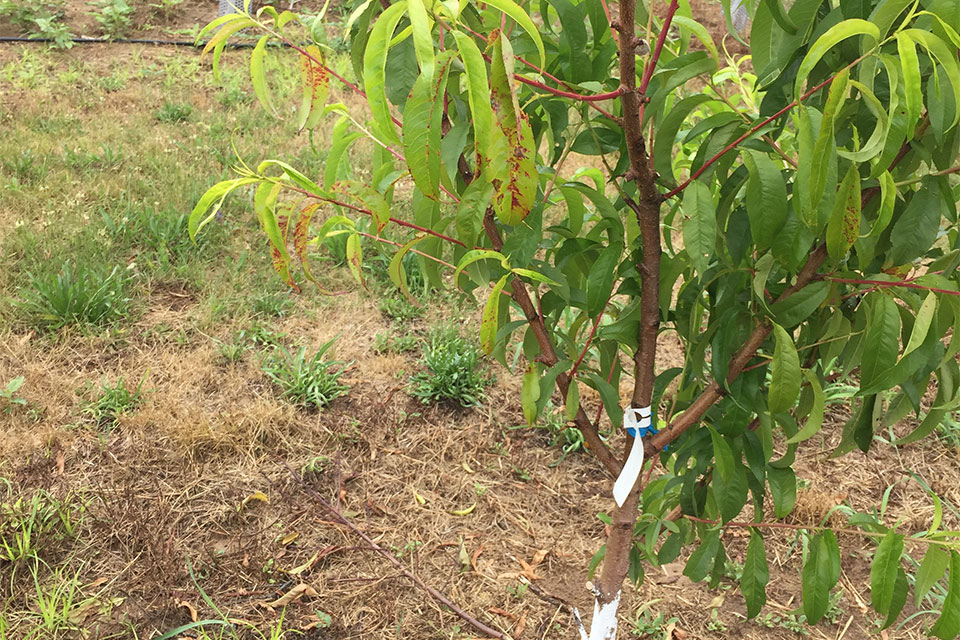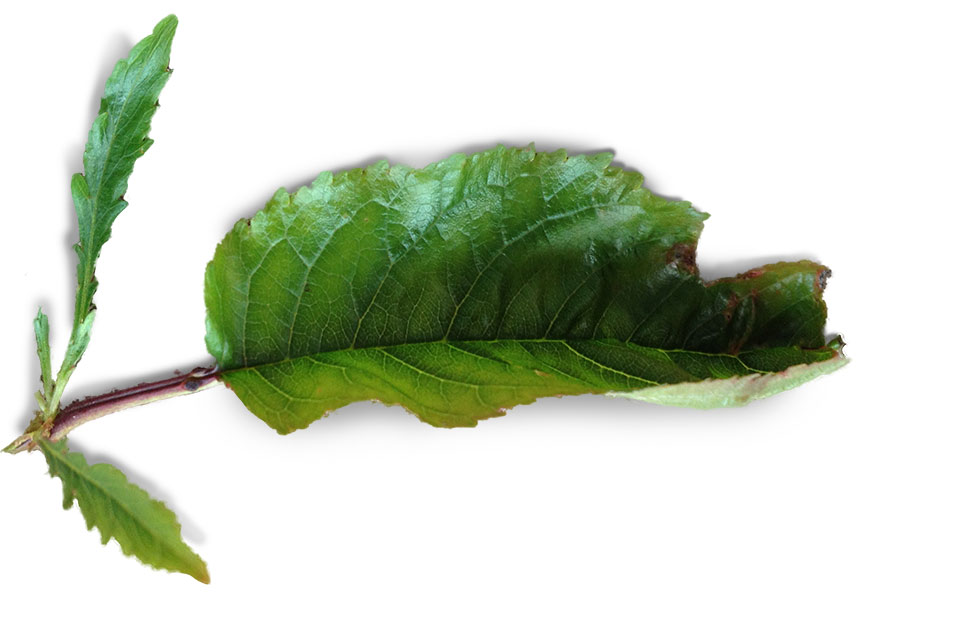X-Disease Management in Stone Fruit is Not That Simple

These characteristic wine red splotches on peach leaves illustrate a tree infected by X-disease. (Photo: Bill Shane)
One of the keys to diagnosing and managing diseases is understanding how those diseases, caused by pathogens, multiply and spread from host to host. It would make sense that removing infected plants would help to keep nearby healthy plants disease-free. However, it isn’t so simple for X-disease of stone fruit.
First reported in the 1930s in Connecticut, the so-called “X-disease of peach” has, at times, been the most serious problem for this crop. It was originally thought to be caused by a virus, or bacterial pathogen, but microscopic studies could not confirm this. The discovery that the disease could be suppressed by oxytetracycline hinted that the cause was a mycoplasma, which was later confirmed by microscopic examination and DNA testing.

A whole tree infected with X-disease. (Photo: Bill Shane)
X-disease is caused by the phytoplasma (Candidatus Phytoplasma pruni), which is a specialized bacteria without a cell wall. The pathogen is fastidious — it cannot (so far) be grown in culture outside its host and can only be transmitted to another plant by grafting or by specific species of leafhopper. The pathogen is also persistent — once infected, leafhoppers and plant hosts are infected for life. So, eradicating infected plants is a necessary control measure.
Symptoms Differ by Hosts
Pathogen hosts include cherries, chokecherry, peaches, nectarines, and almonds. The X-disease pathogen

Sweet cherries on right, infected with X-disease, are compared to normal fruit on left. (Photo: Bill Shane)
also has been detected in orchard weeds. Symptoms and impacts depend on the host, with peaches showing distinctive red wine-colored patches on leaves and premature leaf drop. Sweet and tart cherries show poor growth and small, poorly colored fruit, and with some varieties, enlarged stipules (small leaves on the leaf stem).
Some hosts, such as peach, will decline within a few years of infection. Infected tart and sweet cherry survival depends on the rootstock, with cherry trees and Colt rootstock declining and dying relatively quickly, and those on Mazzard living considerably longer and producing green fruit.

Enlarged stipples of sweet cherry leaves are a sign of X-disease. (Photo: Bill Shane)
Chokecherry is a wild host for X-disease in the eastern North American stone fruit growing areas, particularly in the American and Canadian prairies where it is grown as a fruit. Eradicating chokecherry bushes is critical for managing the pathogen in nearby stone fruit orchards. Infected sweet and tart cherry also are ready sources of inoculum for transmission by leafhoppers.
Electron microscope studies in the 1980s showed that the X-disease pathogen could be found in relatively high concentrations in symptomatic chokecherry, tart, and sweet cherry, but not in peach. Parallel studies showed that leafhoppers can acquire X-disease phytoplasma from cherry but not from peach. This suggests that clustering of X-disease-infected peach trees in an orchard is not spread from tree-to-tree, but perhaps due to an industrious infected leafhopper bringing in the pathogen from another source and infecting several nearby trees. However, since X-disease could move to adjacent trees via root grafting, removing infected peach trees promptly still makes sense.










